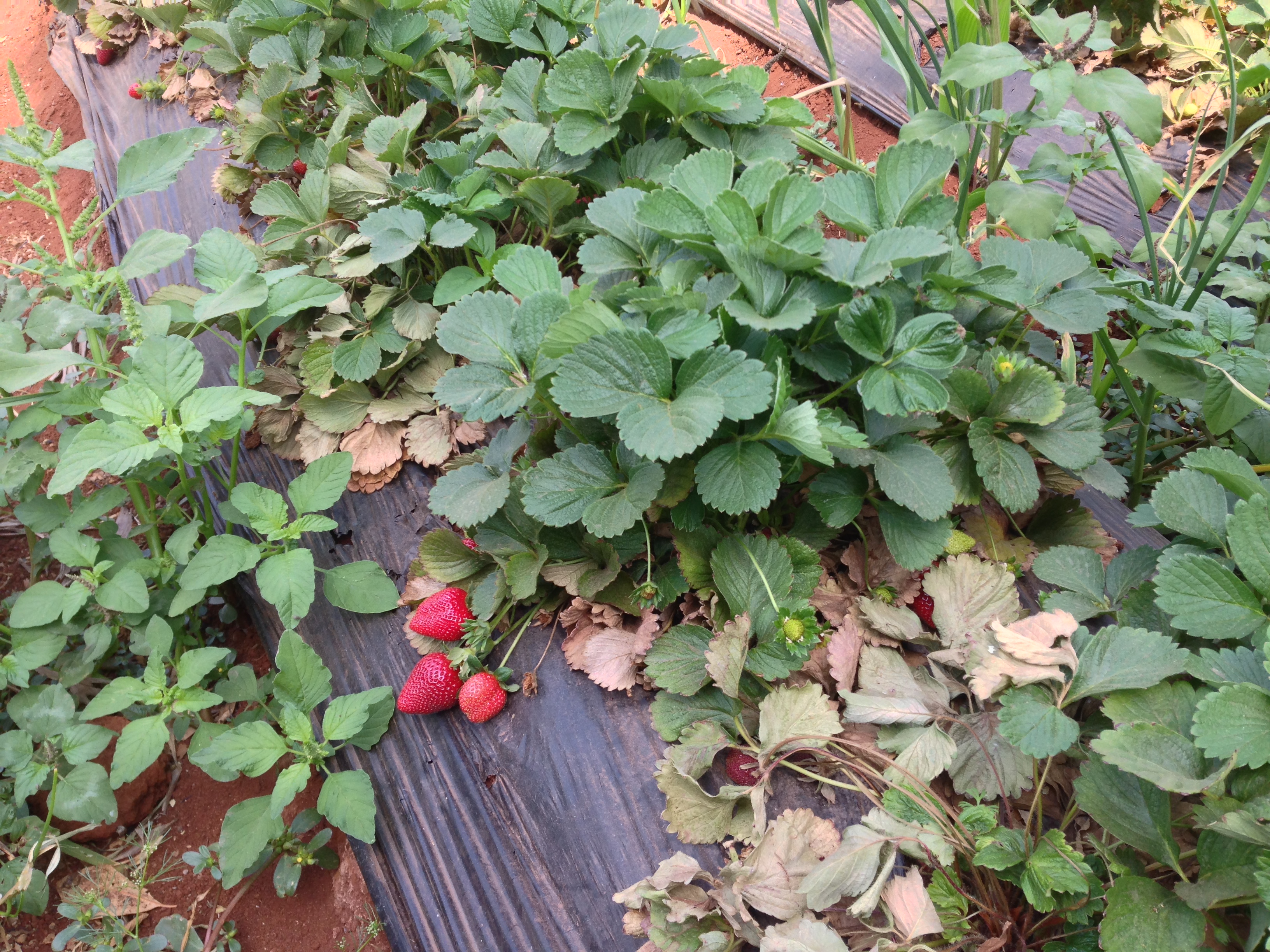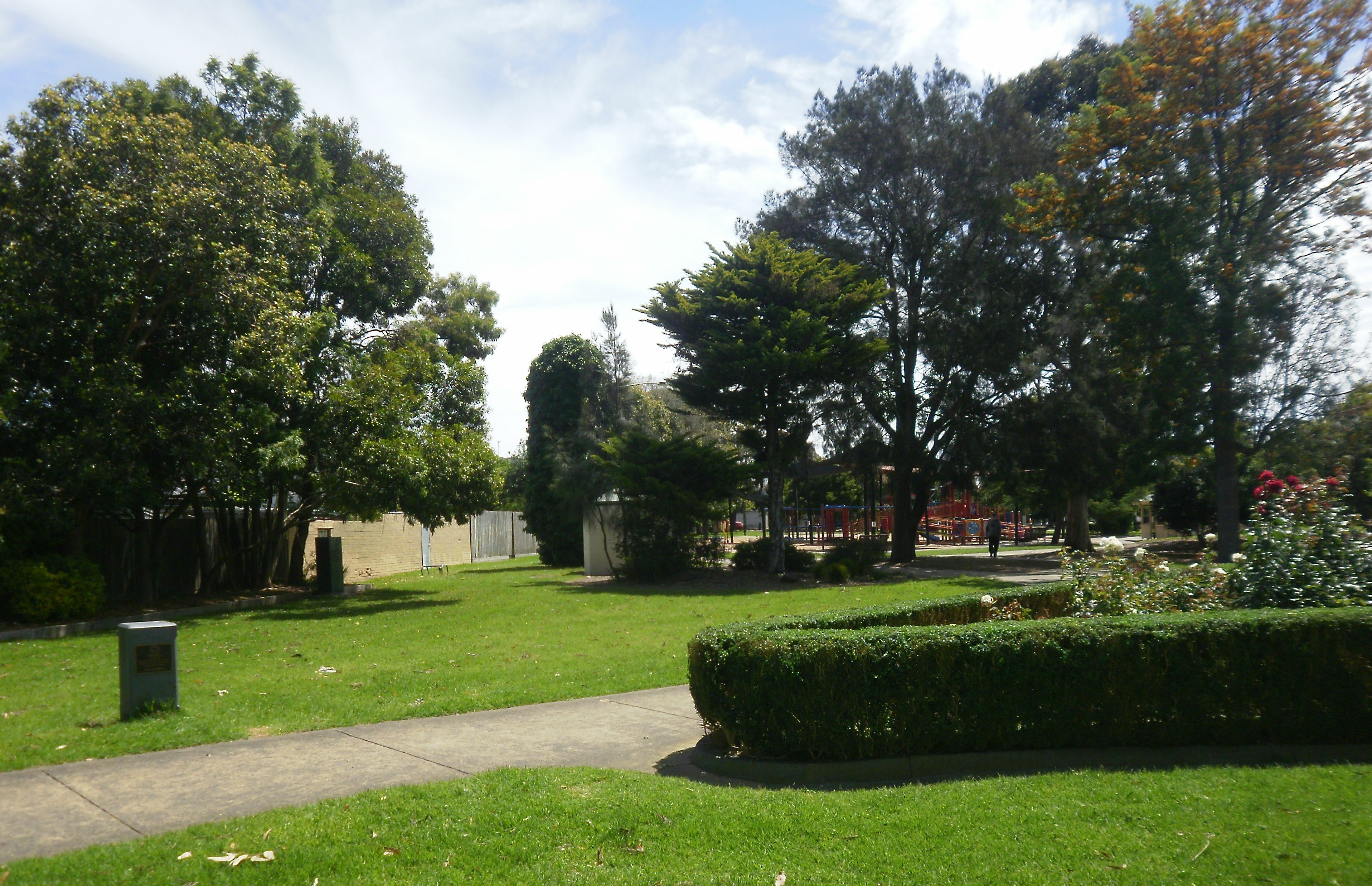|
Mapro Garden
__FORCETOC__ Mapro Gardens is a garden park in the hill station of Panchgani, in the Indian state of Maharashtra. It is near to Mahabaleshwar. The region is India's leading strawberry producer. It is a popular tourist destination. It is located in the village of Gureghar and developed and maintained by food processing company Mapro. Gureghar claims to be one of India's first villages to have 100% sanitation with every house having a Anaerobic digestion, biogas plant. Produce Mahabaleshwar contributes 85% of India's total strawberry output. About 80% is consumed fresh. History Mapro is a food processing company founded in 1959, in the hill-town of Panchgani, near Mahabaleswar. Mapro was started by pharmacist Kishore Vora. From 1983 it was expanded by his nephew Mayur Vora. Mapro set up a fruit processing unit at Gureghar with 12 employees. Mapro provided nearby farmers with technical guidance and committed to buy their produce. Tourist recognition led to the development ... [...More Info...] [...Related Items...] OR: [Wikipedia] [Google] [Baidu] |
Strawberry Farming At Mapro Garden, Panchgani
The garden strawberry (or simply strawberry; ''Fragaria × ananassa'') is a widely grown hybrid species of the genus ''Fragaria'', collectively known as the strawberries, which are cultivated worldwide for their fruit. The fruit is widely appreciated for its characteristic aroma, bright red color, juicy texture, and sweetness. It is consumed in large quantities, either fresh or in such prepared foods as jam, juice, pies, ice cream, milkshakes, and chocolates. Artificial strawberry flavorings and aromas are also widely used in products such as candy, soap, lip gloss, perfume, and many others. The garden strawberry was first bred in Brittany, France, in the 1750s via a cross of '' Fragaria virginiana'' from eastern North America and '' Fragaria chiloensis'', which was brought from Chile by Amédée-François Frézier in 1714. Cultivars of ''Fragaria'' × ''ananassa'' have replaced, in commercial production, the woodland strawberry (''Fragaria vesca''), which was the first stra ... [...More Info...] [...Related Items...] OR: [Wikipedia] [Google] [Baidu] |
Panchgani
Panchgani, called Paachgani (पाचगणी in Marathi), is a hill station and municipal council in Satara district in Maharashtra, India. Panchgani attracts tourists throughout the year. It is also known for having many residential educational institutions. Panchgani is around 108 kilometres from Pune and 250 kilometres from Mumbai. History Panchgani was developed by the British during the British Raj as a summer resort under the supervision of Lord John Chesson in the 1860s. Panchgani was developed as a retirement place because it remained pleasant throughout the year. He surveyed the hills of this region with Rustomji Dubash, and finally decided on this nameless area around the five villages: Dandeghar, Godavali, Ambral, Khingar, and Taighat. The place was aptly named Panchgani, meaning "land between five villages", and Chesson was made superintendent. To develop the infrastructure, Chesson encouraged various professionals - tailors, dhobis, butchers, vegetable ven ... [...More Info...] [...Related Items...] OR: [Wikipedia] [Google] [Baidu] |
Maharashtra
Maharashtra (; , abbr. MH or Maha) is a state in the western peninsular region of India occupying a substantial portion of the Deccan Plateau. Maharashtra is the second-most populous state in India and the second-most populous country subdivision globally. It was formed on 1 May 1960 by splitting the bilingual Bombay State, which had existed since 1956, into majority Marathi-speaking Maharashtra and Gujarati-speaking Gujarat. Maharashtra is home to the Marathi people, the predominant ethno-linguistic group, who speak the Marathi language, the official language of the state. The state is divided into 6 divisions and 36 districts, with the state capital being Mumbai, the most populous urban area in India, and Nagpur serving as the winter capital, which also hosts the winter session of the state legislature. Godavari and Krishna are the two major rivers in the state. Forests cover 16.47 per cent of the state's geographical area. Out of the total cultivable land in the s ... [...More Info...] [...Related Items...] OR: [Wikipedia] [Google] [Baidu] |
Mahabaleshwar
Mahabaleshwar () is a small town and a municipal council in Satara district, Maharashtra, India. It is a place of pilgrimage for Hindus because Krishna river has its origin here. The British colonial rulers developed the town as a hill station, and served as the summer capital of Bombay Presidency during the British Raj. Geography Mahabaleshwar is located on the mountainous Sahyadri range of the Western ghats that run North to south along western coast of India. The coordinates of the town are . Mahabaleshwar is a vast plateau measuring , bound by valleys on all sides. It reaches a height of at its highest peak above sea level, known as Wilson/Sunrise Point The town is about southwest of Pune and from Mumbai, . Mahabaleshwar comprises three villages: Malcolm Peth, Old "Kshetra" Mahabaleshwar and part of the Shindola village. Mahabaleshwar region is the source of the Krishna River that flows across Maharashtra, Karnataka, Telangana and Andhra Pradesh. The legendary sour ... [...More Info...] [...Related Items...] OR: [Wikipedia] [Google] [Baidu] |
Lonely Planet
Lonely Planet is a travel guide book publisher. Founded in Australia in 1973, the company has printed over 150 million books. History Early years Lonely Planet was founded by married couple Maureen Wheeler, Maureen and Tony Wheeler. In 1972, they embarked on an overland trip through Europe and Asia to Australia, following the route of the Oxford and Cambridge Far Eastern Expedition. The company name originates from the Mondegreen, misheard "lovely planet" in a song written by Matthew Moore. Lonely Planet's first book, ''Across Asia on the Cheap'', had 94 pages; it was written by the couple in their home. The original 1973 print run consisted of stapled booklets with pale blue cardboard covers. Tony returned to Asia to write ''Across Asia on the Cheap: A Complete Guide to Making the Overland Trip'', published in 1975. Expansion The Lonely Planet guide book series initially expanded to cover other countries in Asia, with the India guide book in 1981, and expanded to re ... [...More Info...] [...Related Items...] OR: [Wikipedia] [Google] [Baidu] |
Anaerobic Digestion
Anaerobic digestion is a sequence of processes by which microorganisms break down biodegradable material in the absence of oxygen. The process is used for industrial or domestic purposes to manage waste or to produce fuels. Much of the fermentation used industrially to produce food and drink products, as well as home fermentation, uses anaerobic digestion. Anaerobic digestion occurs naturally in some soils and in lake and oceanic basin sediments, where it is usually referred to as "anaerobic activity". This is the source of marsh gas methane as discovered by Alessandro Volta in 1776. The digestion process begins with bacterial hydrolysis of the input materials. Insoluble organic polymers, such as carbohydrates, are broken down to soluble derivatives that become available for other bacteria. Acidogenic bacteria then convert the sugars and amino acids into carbon dioxide, hydrogen, ammonia, and organic acids. In acetogenesis, bacteria convert these resulting organic ac ... [...More Info...] [...Related Items...] OR: [Wikipedia] [Google] [Baidu] |
Parks In India
A park is an area of natural, semi-natural or planted space set aside for human enjoyment and recreation or for the protection of wildlife or natural habitats. Urban parks are green spaces set aside for recreation inside towns and cities. National parks and country parks are green spaces used for recreation in the countryside. State parks and provincial parks are administered by sub-national government states and agencies. Parks may consist of grassy areas, rocks, soil and trees, but may also contain buildings and other artifacts such as monuments, fountains or playground structures. Many parks have fields for playing sports such as baseball and football, and paved areas for games such as basketball. Many parks have trails for walking, biking and other activities. Some parks are built adjacent to bodies of water or watercourses and may comprise a beach or boat dock area. Urban parks often have benches for sitting and may contain picnic tables and barbecue grills. The ... [...More Info...] [...Related Items...] OR: [Wikipedia] [Google] [Baidu] |
Protected Areas Of Maharashtra
Protection is any measure taken to guard a thing against damage caused by outside forces. Protection can be provided to physical objects, including organisms, to systems, and to intangible things like civil and political rights. Although the mechanisms for providing protection vary widely, the basic meaning of the term remains the same. This is illustrated by an explanation found in a manual on electrical wiring: Some kind of protection is a characteristic of all life, as living things have evolved at least some protective mechanisms to counter damaging environmental phenomena, such as ultraviolet light. Biological membranes such as bark on trees and skin on animals offer protection from various threats, with skin playing a key role in protecting organisms against pathogens and excessive water loss. Additional structures like scales and hair offer further protection from the elements and from predators, with some animals having features such as spines or camouflage servin ... [...More Info...] [...Related Items...] OR: [Wikipedia] [Google] [Baidu] |
Gardens In India
Mughal gardens are a type of garden built by the Mughals. This style was influenced by the Persian gardens particularly the Charbagh structure, which is intended to create a representation of an earthly utopia in which humans co-exist in perfect harmony with all elements of nature. Significant use of rectilinear layouts are made within the walled enclosures. Some of the typical features include pools, fountains and canals inside the gardens. Afghanistan, Bangladesh, India, and Pakistan have a number of Mughal gardens which differ from their Central Asian predecessors with respect to "the highly disciplined geometry". History The founder of the Mughal empire, Babur, described his favourite type of garden as a charbagh. The term '' bāgh'', ''baug'', ''bageecha'' or ''bagicha'' is used for the garden. This word developed a new meaning in South Asia, as the region lacked the fast-flowing streams required for the Central Asian charbagh. The Aram Bagh of Agra is thought ... [...More Info...] [...Related Items...] OR: [Wikipedia] [Google] [Baidu] |






